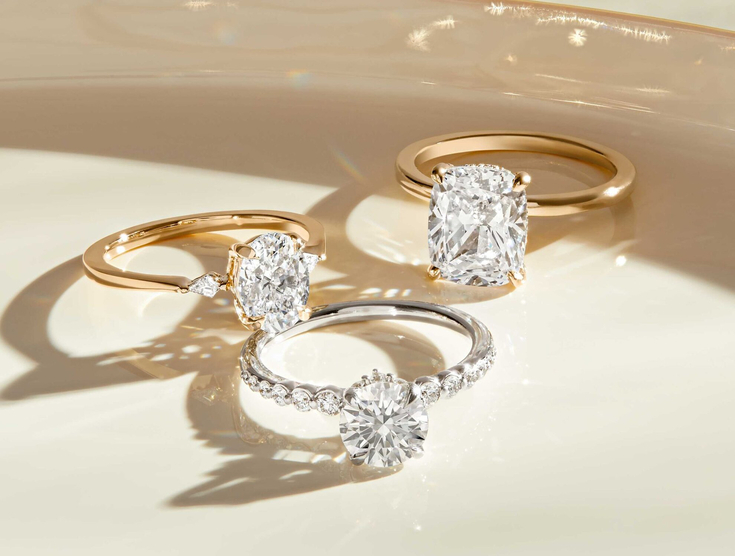In the world of gemstones, two types of diamonds have captured the attention of consumers and jewelers alike: 랩다이아 천연다이아 차이. While both varieties possess exceptional beauty and brilliance, they differ significantly in their origins, characteristics, and implications for sustainability and ethics. In this article, we will delve deep into the distinctions between these two types of diamonds, exploring their formation processes, quality, pricing, and environmental impacts.
Formation and Origins
Natural diamonds are formed deep within the Earth’s mantle, typically at depths of 90 to 150 miles, under extreme pressure and temperature conditions. Over the course of millions to billions of years, carbon atoms crystallize into the diamond structure we recognize today. The journey of a natural diamond from formation to its discovery is a lengthy one. Natural diamonds can be found in volcanic pipes or alluvial deposits, where geological activity has brought them closer to the surface.
In contrast, lab-grown diamonds are created in controlled environments using advanced technology. The two primary methods for producing lab diamonds are High Pressure High Temperature (HPHT) and Chemical Vapor Deposition (CVD). HPHT mimics the natural diamond-forming process by applying high pressure and temperature to carbon, while CVD involves vaporizing carbon-rich gases to encourage diamond growth on a substrate. The entire process can take a matter of weeks to months, yielding diamonds that are chemically, physically, and optically identical to their natural counterparts.
Characteristics and Quality
When it comes to assessing the quality of diamonds, several factors come into play, commonly known as the Four Cs: Cut, Color, Clarity, and Carat weight. Both lab-grown and natural diamonds can exhibit a wide range of qualities across these categories.
The cut of a diamond is perhaps the most crucial factor influencing its overall appearance. A well-cut diamond reflects light beautifully, creating that captivating sparkle. Lab diamonds can be cut with the same precision as natural diamonds, allowing consumers to find equally stunning options in both categories.
Color refers to the absence of color in diamonds, with completely colorless diamonds being the most valuable. Natural diamonds may exhibit slight color tints, while lab diamonds can also range from colorless to various shades. Both types can be graded on the same color scale, ensuring buyers can find the exact shade they desire.
Clarity measures the presence of internal or external imperfections, known as inclusions and blemishes. Natural diamonds often carry unique inclusions formed during their lengthy formation process, which can add character. Lab diamonds, on the other hand, can be produced with fewer inclusions, resulting in higher clarity ratings. However, discerning the origin of these inclusions often requires specialized equipment and expertise.
Finally, carat weight simply measures a diamond’s size. Both lab-grown and natural diamonds are available in various carat weights, allowing buyers to choose based on their preferences and budget.
Pricing Differences
One of the most significant distinctions between lab-grown and natural diamonds lies in their pricing. Due to the more efficient and controlled production process of lab diamonds, they typically cost 20% to 40% less than their natural counterparts. This price difference can be attributed to the supply and demand dynamics of the diamond market. Natural diamonds are finite and require extensive mining efforts, while lab diamonds can be produced in larger quantities.
For consumers, this lower price point means that purchasing a lab-grown diamond allows for a more significant investment in size and quality without breaking the bank. Many buyers are drawn to the idea of acquiring a larger diamond or a higher quality stone at a more affordable price, making lab-grown diamonds an attractive option.
Ethical Considerations and Sustainability
As consumers become increasingly conscious of the ethical implications of their purchases, the distinction between lab-grown and natural diamonds grows even more pronounced. Natural diamonds can sometimes be associated with unethical mining practices, including conflict diamonds or diamonds mined in war-torn regions where profits fund violence and human rights abuses. The Kimberley Process was established to address these concerns, but it is not foolproof.
In contrast, lab-grown diamonds offer a more sustainable and ethical alternative. The controlled environments in which they are created allow for transparency in their sourcing and production, making them an appealing choice for ethically-minded consumers. Additionally, the environmental impact of mining natural diamonds can be significant, with extensive land disruption and habitat destruction. Lab diamonds, while not entirely without environmental concerns, generally require less land and resources.
Consumer Preferences and Trends
As the awareness of lab-grown diamonds continues to grow, many consumers are leaning towards them for their affordability and ethical considerations. The younger generation, in particular, shows a strong preference for lab diamonds, valuing sustainability and ethical practices in their purchasing decisions. This shift in consumer behavior has led to an increase in retailers offering lab-grown options alongside traditional natural diamonds.
Moreover, lab-grown diamonds have found acceptance among a broader demographic, with many individuals seeking them for engagement rings, wedding bands, and other significant jewelry pieces. The message of love and commitment remains unchanged, regardless of the diamond’s origin, allowing couples to choose the type of diamond that aligns with their values and budget.
Conclusion: Making an Informed Choice
When it comes to choosing between lab-grown and natural man made diamonds, the decision ultimately boils down to personal preferences, values, and budget. Both types of diamonds offer stunning beauty and exceptional quality, ensuring that consumers can find a piece that resonates with their individual styles and ethics.










